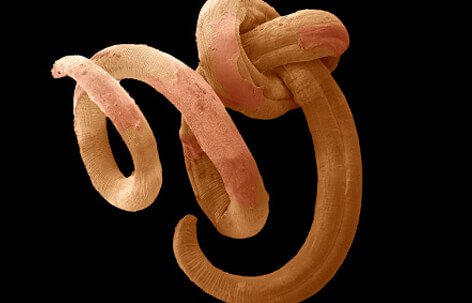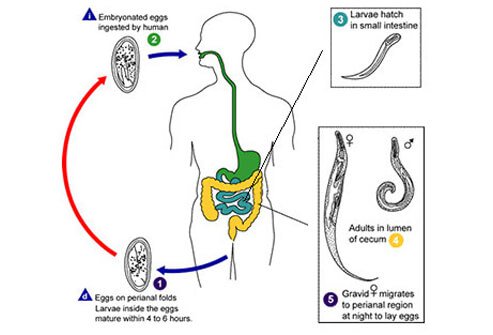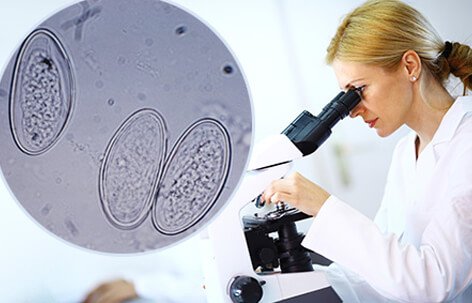Via OnHealth: Pinworms Symptoms, Treatments, and Medication
What Are Pinworms?

Pinworms are small, threadlike parasites that live in the colon and rectum of infected individuals. Pinworms are a species of roundworm (nematode) called Enterobius vermicularis. The worms are just a few millimeters long. Pinworm infections are the most common worm infection in the U.S.
Pinworms Symptoms
Pinworm infection symptoms usually range from mild to nonexistent. Adult female pinworms travel outside the body at night and lay eggs around the anus which may cause itching and discomfort. Nighttime symptoms can lead to irritability and sleep problems.
Pinworms in Children
Anyone can get pinworms, but the infection is most common in school-aged children. The infection often spreads to others in daycare, school, home, and other similar settings. Pinworm infection can be distressing but it is very common. It is estimated that more than 30% of children worldwide harbor pinworms.
Pinworms in Adults
Pinworms are frequently associated with children, but adults can get them, too. Parents may get pinworms from their infected children. Adults who work at daycare centers, schools, or with institutionalized people may become infected.
How Do Pinworms Spread?
Pinworms spread through a fecal-oral route of transmission. This refers to infectious agents in the GI tract passing from one person to another via contaminated objects and lack of proper hygiene (hand washing after using the restroom). People are newly infected by ingesting pinworm eggs that may be on countertops, shared food, bedding, clothing, and other objects. Children may ingest pinworm eggs by sucking on their fingers or thumbs. Pinworm eggs may also become airborne, inhaled, and swallowed, resulting in infection.
It is a common misconception that people can get pinworms from the family dog. While pet dogs and cats can harbor many types of parasites that can infect people, humans are the only host for pinworms.
Pinworms Life Cycle
Pinworm eggs hatch to release larvae which then grow into adult `worms. Adult female pinworms lay eggs on the skin around the anus. After a host ingests the eggs, larvae hatch when they reach the small intestine. The larvae mature into adult pinworms which then travel to the colon. Adult pinworms live about 2 months.
Pinworms Tape Test
Pinworms can be diagnosed based on symptoms and sometimes by seeing them with the naked eye. In other cases, a tape test may be done to collect and identify pinworm eggs under a microscope. The test involves wrapping a piece of cellophane tape, sticky side up, around a clean tongue depressor. The tape is then pressed on the skin around the anus as soon as the person with suspected worms wakes up. Do not bathe, use the restroom, or change clothing before doing the tape test so as to not disturb potential pinworm eggs. If possible, it is a good idea to obtain samples 3 days in a row to maximize the chance of identifying any eggs that are present.
Pinworms Treatment
Prescription and over-the-counter medications are available to treat pinworms. Mebendazole and albendazole are prescription medications for the treatment of pinworms, and pyrantel pamoate is available over- the- counter. The medications only kill adult pinworms so they must be given in two doses. The first dose kills existing adult pinworms, and the subsequent dose given 2 weeks later kills any new adults that have hatched from any remaining eggs. If multiple family members or children in a daycare or school setting are infected, it is best to treat everyone at the same time to minimize the chance of reinfection.
Pinworms Prevention
The best way to avoid getting pinworms is to practice rigorous good hygiene. Wash hands well using soap and warm water after using the restroom. Wash bedding, towels, and undergarments in hot water. Always wash hands before eating. Sanitize hard surfaces. Teach children about the importance of hand washing and dissuade them from biting their nails. Pinworm eggs may survive on surfaces for up to 2 to 3 weeks.













